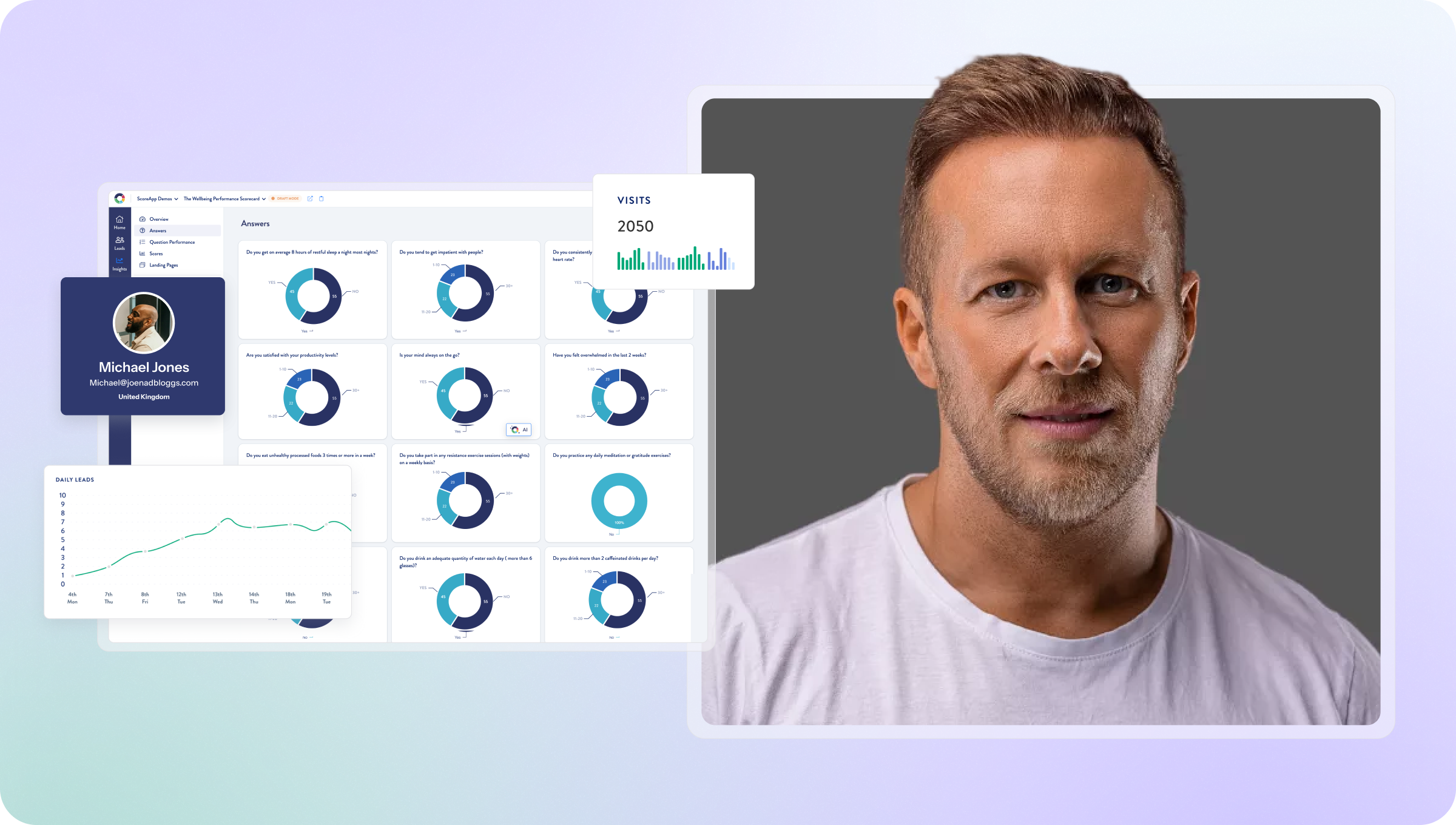8 ways to save money on your next launch using a waitlist


Only 10% of new products succeed. That’s a lot of financial risk – think about the cost of your last launch.
You need to find out if your great idea has legs with the people you think might buy it. But specialist support from market research companies has too big a price tag for all but the largest global companies.
Businesses need to create new products and services. And that innovation needs investment. While no one can guarantee success, you need to de-risk your process to protect your bottom line.
There is an easy way to avoid costly launches…
Enter a simple solution to this tricky conundrum… waitlists!
You can mitigate the risks of launch failure by using a waitlist for your new launches, which allows us to sharpen our ideas in the market, not in our minds.
We do that by putting our idea out into the world, contacting other people who fit our target market, getting feedback on the idea, and considering their thoughts.
Using waitlists, if we fail at all, we fail fast and fail cheap and learn from the process.
Setting up a waitlist saves your business money at different stages of launching a new product or service. It minimises risk by allowing you to test the market and confirm signals of interest before committing significant investment.
This de-risks your process and saves you money at every stage – from concept to a successful launch. You just need to invest a couple of hours creating a waitlist scorecard and landing page, promote it wherever your audience are, then analyse the goldmine of information to make data-based, strategic decisions.
1. Reduced upfront costs

One of your team comes to you with an interesting concept for your ‘next big thing’. Before you put any resources into building a prototype, developing software, or designing any part of it – ask your potential customers if they’re interested.
This way, you can get a sense of what your competitors are doing and the state of the overall market concerning your new concept. Maybe your clients are already happily buying the same thing somewhere else…
Adding well-worded market research quiz questions to your waitlist means that you can find out if there’s enough interest in your idea before you commit any significant resources.
- If no one signs up for your waitlist, don’t go any further.
- If there’s an overwhelming response and you get way more subscribers than you expected – you’re onto a winner.
- If you get some interest, but they express some reservations, you have the opportunity to change things to meet audience expectations.
In any case, you have access to invaluable information through their answers to your carefully crafted questions. So if you have enough people on your waitlist, you can use your analysis to make your offering even more appealing by taking your audiences’ opinions on board.
Using a waitlist at this stage also helps you prioritise different ideas. Ask your target market what’s more important to them – decision made.
For example, you’re thinking of adding 3 new features to an existing product or service. But your waitlist market research questions show that, while there’s a lot of enthusiasm for 2 of the new concepts, the third one isn’t a priority for your clients. Focus on the 2 they love and ditch the one they’ll never use.
As Svafa Grönfeldt, faculty member for MIT Professional Education’s online program said:
“…many innovations fail because they introduce products or other solutions without a real need for them. There’s no market for the solutions they’ve created.
“Some of these failures arise from a lack of empathy on the part of the organization, with those in decision-making positions not taking the necessary time to study and understand the customers’ true needs. Without putting themselves in their shoes, it’s often too late when they realize there’s no market for their solutions.”
Ch-Ching! By establishing there’s a real demand before you invest, you don’t waste any time or money creating and producing something no one’s interested in buying.
2. Market validation
Having a full waitlist is a massive ‘show of hands’ that your potential customers are interested in and engaged in your new product or service. Your waitlist is evidence to demonstrate product-market fit and show that the size of your market is a viable investment.
Elon Musk gives us a great example of this with his Cybertruck concept. He started with a waitlist. Not a prototype people could sit in, not a factory ready to go with the right tooling, not even branding mock-ups – but a simple waitlist.
He launched his waitlist with an idea of what the car might look like and some of the specifications it might have. He was upfront about the fact that it would be at least 3 years before there would be one ready to sell. He asked for a $100 deposit to join the waitlist that gave members priority access to buying the Cybertruck.
Under those terms, he had a waitlist of 1 million subscribers. He took this money and these signals of interest (knowing that only a percentage of subscribers would eventually become buyers) to investors and got backing to build the Cybertruck factory.
Musk tested and proved his demand line using a waitlist, before building his supply line. The chances of a successful launch are hugely increased and potential investors can interrogate the evidence.
This doesn’t just work for fantasy car production! Waitlist feedback gives you crucial information that helps determine if the size of your market is a viable investment for your business. And that of any investors, if you’re looking for finance.
Your launch will only be successful if you make enough sales. A waitlist doesn’t just gauge the enthusiasm of your potential customers. It validates the size of your market, minimising the risk of launching something that fails to meet market needs.
3. Better inventory management
Down to the practicalities… If you’re manufacturing a physical product, you don’t want to over-order and risk having unsold goods taking up warehouse space. But you also don’t want to risk disappointing customers by not having enough to meet demand.
Using a waitlist makes inventory management easier, especially if you cap the number of subscribers from the start. You produce or order the right amount of inventory to match your waitlist total. Every single customer is supplied with their item and you limit the risk of unsold goods to a percentage of that total. Even if the absolute worst happens and no one buys, the total cost is £X. And if you sell out – time to celebrate! Then start a new waitlist.
The cost savings here are obvious. Produce or order what you need to satisfy your waitlist. The risk of overproduction is contained and storage costs of unsold goods are minimised.
It also saves you the harder-to-quantify cost of a damaged reputation, if you don’t meet demand and leave customers disappointed…
4. Targeted marketing activity
By using a waitlist, you can identify your most interested prospects and create marketing campaigns that really resonate with them. Because a ScoreApp waitlist is so quick to create, you can target different ones to different segments of your audience.
Different types of customers may use your product or service to do different jobs. It makes sense that your personalised marketing campaigns speak directly to those specifics.
For example, if someone’s looking to use bicarbonate of soda to clean their oven, they don’t want to know how many teaspoons of it they need in their gingerbread recipe. The same product is being used for 2 totally different jobs.
Hubspot’s State of Marketing Report found that segmented emails drive 30% more opens and 50% more click-throughs than generalised emails. It also reveals that 78% of marketers report subscriber segmentation as the most effective strategy in their email marketing campaigns. The more efficient your campaigns, the better the ROI on your marketing spend. Insights from your waitlist give you the opportunity for maximum personalisation, specifically tailored email sequences, and segmented, pre-qualified leads.
Waitlist data goes deeper than your brand personas and gets into how this specific launch solves their pain points, meets the need for a particular job, or promotes their aspirations. It gives your marketing and advertising teams details they can use to forge emotional connections.
Tailoring your campaigns using waitlist data boosts your marketing ROI by enabling hyper-personalisation.
You also avoid wasting time (= money) on unqualified leads.
5. Improved cash flow
You can add a deposit or pre-order element to your waitlist customers as an immediate influx of cash. This can be a percentage of the total cost of your product or service, depending on your price point.
That’s your upfront production costs taken care of! In some cases, the amount earned from pre-orders or deposits can eliminate the need to raise money from external investors.
Founder of nail-tech company Glaize, Gina Farran, explains why they used a pre-order sales strategy:
“Because we manufacture everything in-house, we didn’t have full visibility on which colors would sell well and which wouldn’t. With pre-orders, we can model our production runs based on actual customer orders, which reduces wastage and ensures we use only necessary amounts of raw materials.
“By the time we opened for pre-orders, we had over 4,000 people on our waitlist. They had waited a long time, so we initially opened pre-orders exclusively to them to thank them for their patience. Our strategy helped us launch the business with a bang.”
Adding a deposit or pre-order element to your waitlist is, quite simply, cash in the bank.
6. Informed decision-making

The insights from your ScoreApp waitlist data inform your strategic decision-making at different stages in the lifecycle of the product. Expertly worded questions help you get inside the heads of your prospects and discover what they think about:
- What new features they’d prefer to see in this type of service or product – which is most important to them?
- How do they imagine themselves using the product – what job is it doing for them?
- How much they’d be prepared to pay for the new product, service or feature – how does that sit with your competitor pricing research? Is the problem significant enough to justify the cost?
- What might prevent them from using the product? What might put them off? For example, a mobility device that doesn’t fold down small enough to fit into your car boots. This is likely to be a more important feature than, for example, the colour of the fabrics used.
Combine this with the figures for your KPIs and you’ve got all the numbers you need to define success, track each element of your campaigns, and identify and fix any weak spots.
You constantly learn about how your customers are experiencing your brand by measuring:
- Completion rates
- Time spent on your waitlist quiz questions
- Drop-off points
- Demographics
- Lead generation and, most importantly, conversion
- Shares on socials
- Repeat visits
- Device and platforms being used by your customers
- Click-through rates
You need to identify the best measurements for your context, alongside revenue and profit margins, and use the detail to be in a perpetual upward spiral of improvement.
As you can see, analysis of your waitlist metrics doesn’t just impact the marketing department. By sharing data with design and production teams you can really fine-tune your offering before it hits the market.
This kind of flawless product-market fit comes from data-driven decisions, boosts the chances of launch success, and reduces the likelihood of post-launch modifications. Repeat sales and client retention are built into your waitlist strategy from the start, so this invaluable stream of data continues for the lifetime of your product or service.
Getting the details of your product or service right before it goes to market saves on costly modifications post-launch and ensures an excellent product-market fit.
Monitoring every part of your waitlist sales funnel means you can avoid losing any sales by plugging leaks quickly.
7. Minimised risk of failure
Using a waitlist removes any guesswork from the launch process. It also minimises the risk of failure because you’ve gauged your audience’s interest level and uncovered any potential issues at the concept stage. You can easily pivot to a different feature, product or service at this point because you haven’t financially invested in a full launch.
The Glastonbury Music Festival is a prime example of a waitlist ensuring success. You can only register interest by subscribing to their waitlist and paying a £75 deposit. 700,000 people are on the waiting list, for only 140,000 tickets.
Apparently, we Brits even like queueing virtually!
For only one day, the tickets go on general sale at 9am. For 2024’s festival, they sold out in just under an hour. The final wave of ‘resale’ tickets – those where people had paid a deposit, but didn’t pay the full amount in time – was sold out in 22 minutes.
The Glastonbury waitlist strategy didn’t just minimise risk, it guaranteed a sellout – with people lined up ready to buy unsold tickets.
Use a ScoreApp waitlist to minimise the risk of your event, product, service or feature launch – by deepening your understanding of your audience and being in control of the numbers.
8. Enhanced customer relationship management
By using a waitlist to understand the needs of your different audience segments, you can connect with them in a much more authentic way and, ideally, have a permanently full waitlist.
Rolex is a masterful example of a company that’s used a waitlist strategy to ensure that they constantly generate demand for their luxury products while constraining supply. You can’t just walk into a jeweller and buy the more sought-after Rolex designs – you have to ask to join their waitlist…
Their ‘18 month minimum’ waitlist. There’s no definitive timeframe given. You may be encouraged to buy other Rolex items to boost your place on the waitlist.
As a company, they’re not taking big safety risks, investing in mindblowing innovation, or developing a world-class customer service reputation. And yet – they operate at 70% profit margins.
Why?
Because they understand their customers. The sense of product exclusivity is compounded by the long waitlist and the possibility that you may never be first in the queue.
If you’re actually wearing a Rolex Daytona, you don’t just have the kudos of owning something with that price tag, you’ve also successfully negotiated a notoriously difficult waitlist process. You’re in the VIP section of an already ‘members-only’ club.
Rolex knows this feeling of belonging to the elite drives their clients. And they use a waitlist strategy perfectly to give them a heightened sense of exclusivity.
What drives your customers? How can you use a waitlist strategy to tap into the emotions behind their purchase? You know your customers better than anyone else. Make sure they’re satisfied customers before they’ve even made a purchase!
As a McKinsey Digital report into derisking corporate business launches concludes:
“Validating customer desirability via social-media testing and beta programs helps leaders to align their organization around a clear vision of the target customer experience. Incumbents that maintain the pulse of the customer, not as a phase in a project but as a permanent capability, will be better placed to emulate the customer-first mentality, responsiveness, and agility…”
Happy customers are repeat customers – saving you the cost of acquiring new customers!
And there’s all that lovely word-of-mouth advertising that loyal brand advocates spread around their communities.
Set up a simple but effective waitlist using ScoreApp

By leveraging a waitlist funnel to test the market you can make data-driven decisions that mitigate financial risks, optimise all your resources and save you money at different points along the journey to launch.
No more guesswork. Step away from the crystal ball. Save money on your next launch with a ScoreApp waitlist. You’ve literally nothing to lose – you can try it for free!



